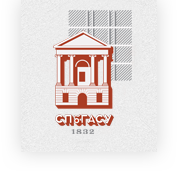An Exploration of Briony’s Atonement in McEwan’s Atonement
DOI:
https://doi.org/10.63313/ah.9012Keywords:
Atonement, Character Image, Growth, Personality TheoryAbstract
Atonement is one of the classic masterpiece of the renowned British author Ian McEwan, published in 2001, which narrates a tale encompassing themes of love, guilt, and war. Within the realm of literature, the examination of the growth and psychological evolution of female characters has consistently been a significant subject of interest. As feminist criticism has evolved, an increasing number of literary works have begun to delve into the inner lives of female characters and trace their developmental paths amidst societal transformations. This paper will explore the reasons behind the formation of Briony’s character traits and the impact of her upbringing on her development. It will analyze how these factors have shaped her character and the influence of Briony’s atonement on her own fate as well as that of others. In terms of theoretical application, this study will integrate Freud’s personality theory to dissect Briony’s psychological changes and the process of self-awareness, using this framework to elucidate her growth and the motivations behind her acts of atonement. By investigating Briony’s journey of atonement, this thesis not only uncovers the deep exploration of hu-man nature and profound reflection on social realities within literary works but also offers new perspectives and approaches for research in related fields. Through a comprehensive analysis of Briony’s character from her portrayal, growth, and atonement, this thesis aims to provide a nuanced understanding of her development and the broader implications of her actions within the narra-tive of Atonement.
References
[1] Barry, P. (1995). Beginning theory: An introduction to literary and cultural theory. Man-chester University Press.
[2] Crosby, S. K. (2024). The multifaceted work of Christ: Herman Bavinck’s doctrine of atonement as both corrective and retrieval. Perichoresis, 22(1), 77-95.
https://doi.org/10.2478/perc-2024-0005
[3] Gordon, L. S. (2023). The doctrine of exemplarism: A symbolic attempt to escape the Pela-gian Heresy. Religions, 14(12), 1494-1505.
https://doi.org/10.3390/rel14121494
[4] Horney, K. (1946). Our Inner Conflicts. Routledge.
[5] Liu, J. J. (2020). A brief review of Briony in each period in Atonement from the perspective of Sigmund Freud’s psychoanalysis. Open Access Library Journal, 7(10), 1-6.
https://doi.org/10.4236/oalib.1106889
[6] López, O. (2023). Narrating identity: “Former selves” and metafiction in Ian McEwan’s Atonement. Anglia, 141(1), 78-97.
https://doi.org/10.1515/ang-2023-0004
[7] McEwan, I. (2013). Atonement. Shanghai Translation Publishing House.
[8] Salman, D., Alhasan, G., & Al-Shara’h, M. (2023). Moral stupidity in Ian McEwan’s Atonement. Theory and Practice in Language Studies, 13(8), 1931-1937.
https://doi.org/10.17507/tpls.1308.08
[9] Warda, U. W., & Karim, R. (2023). (Un)reliable narrative in Ian McEwan’s Atonement. World Journal of English Language, 14(2), 16-24.
Downloads
Published
Issue
Section
License
Copyright (c) 2025 by author(s) and Erytis Publishing Limited.

This work is licensed under a Creative Commons Attribution-ShareAlike 4.0 International License.















